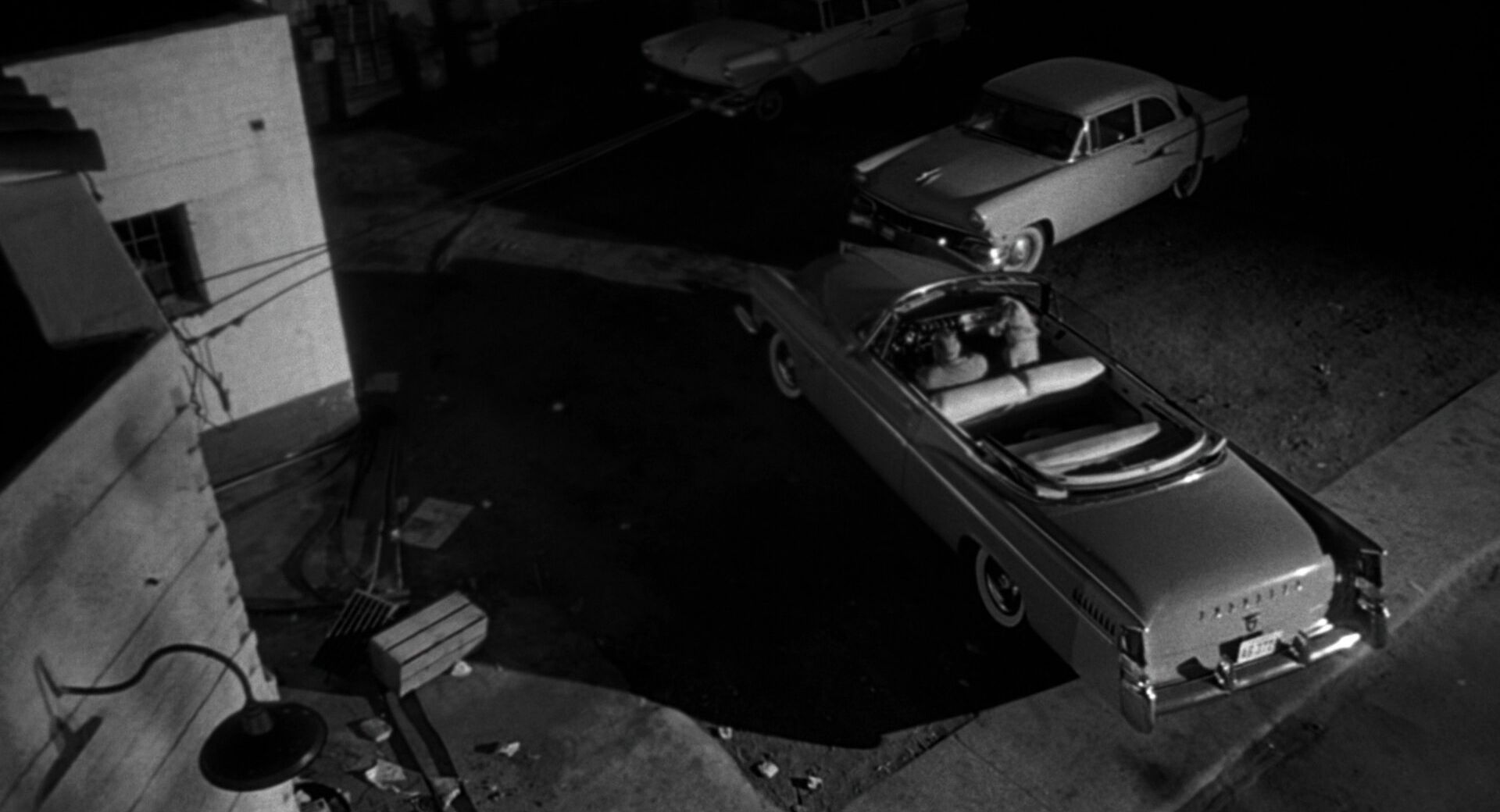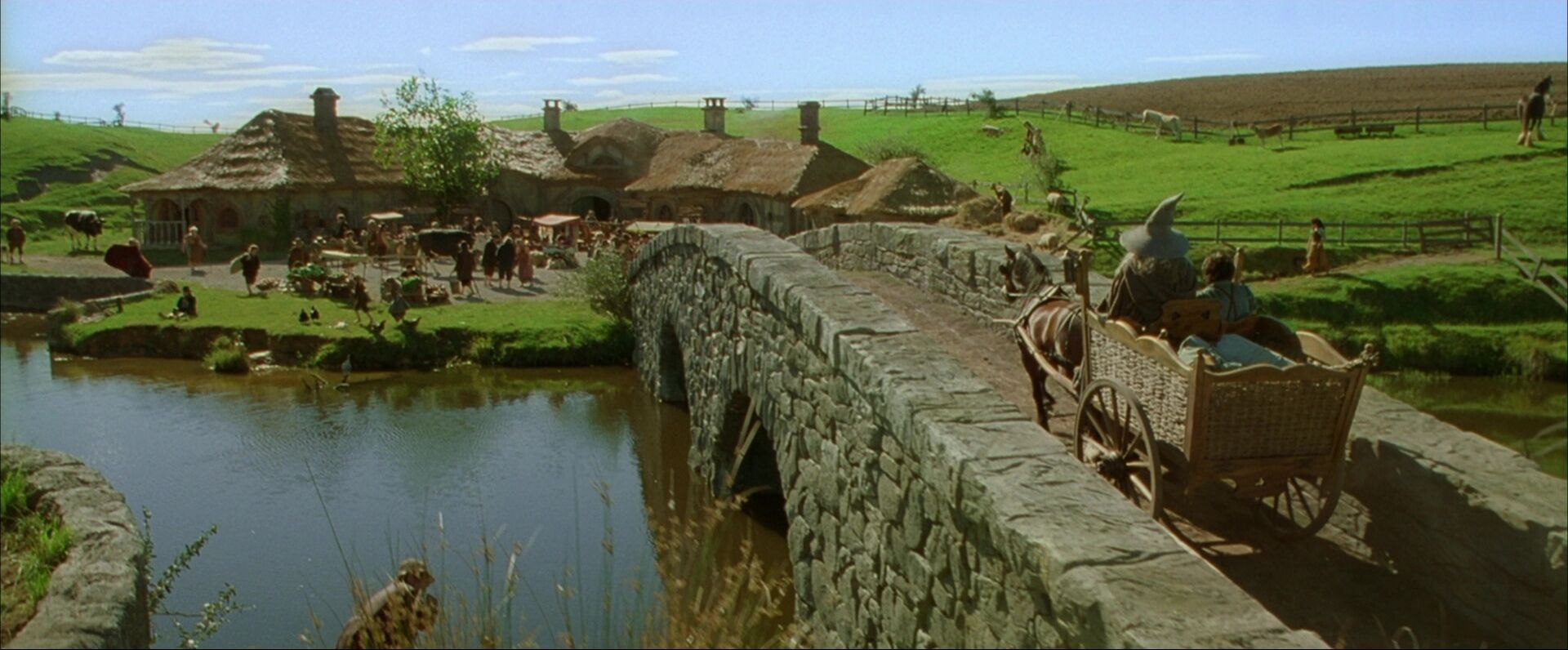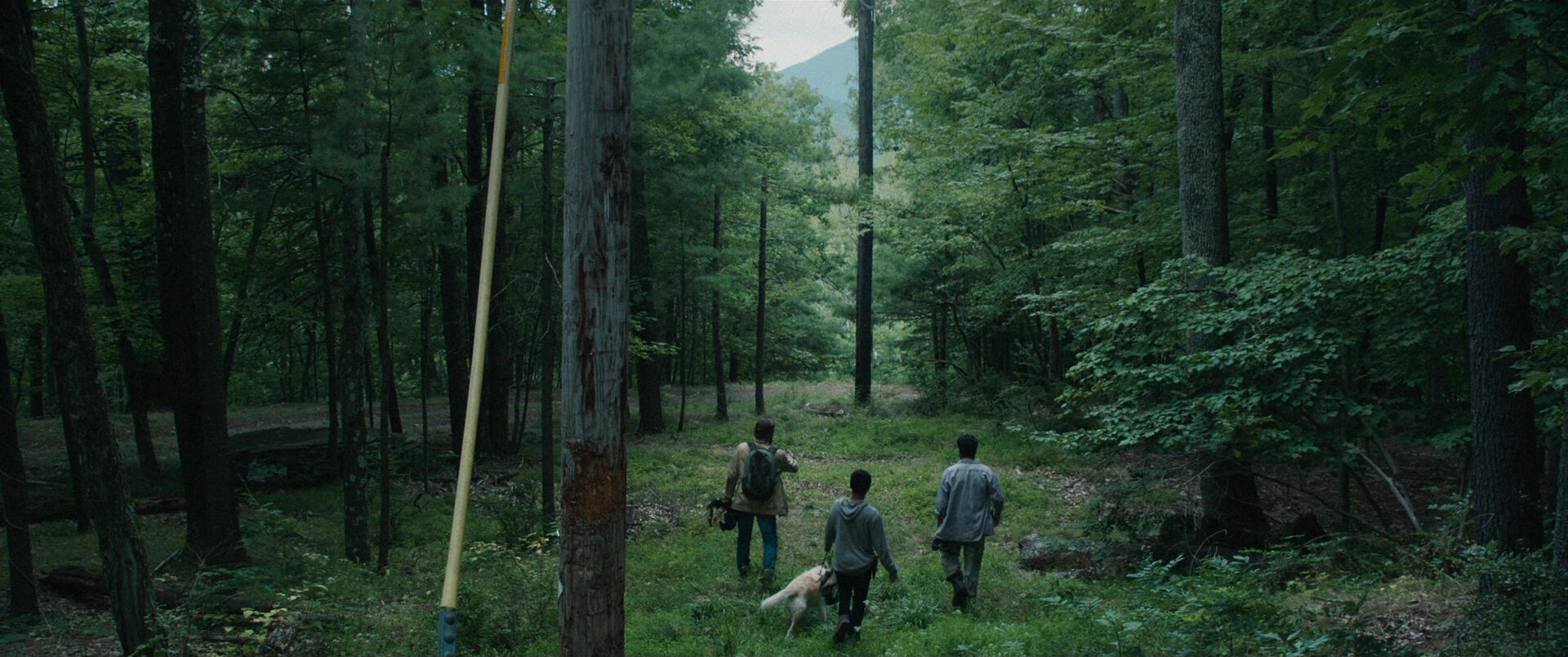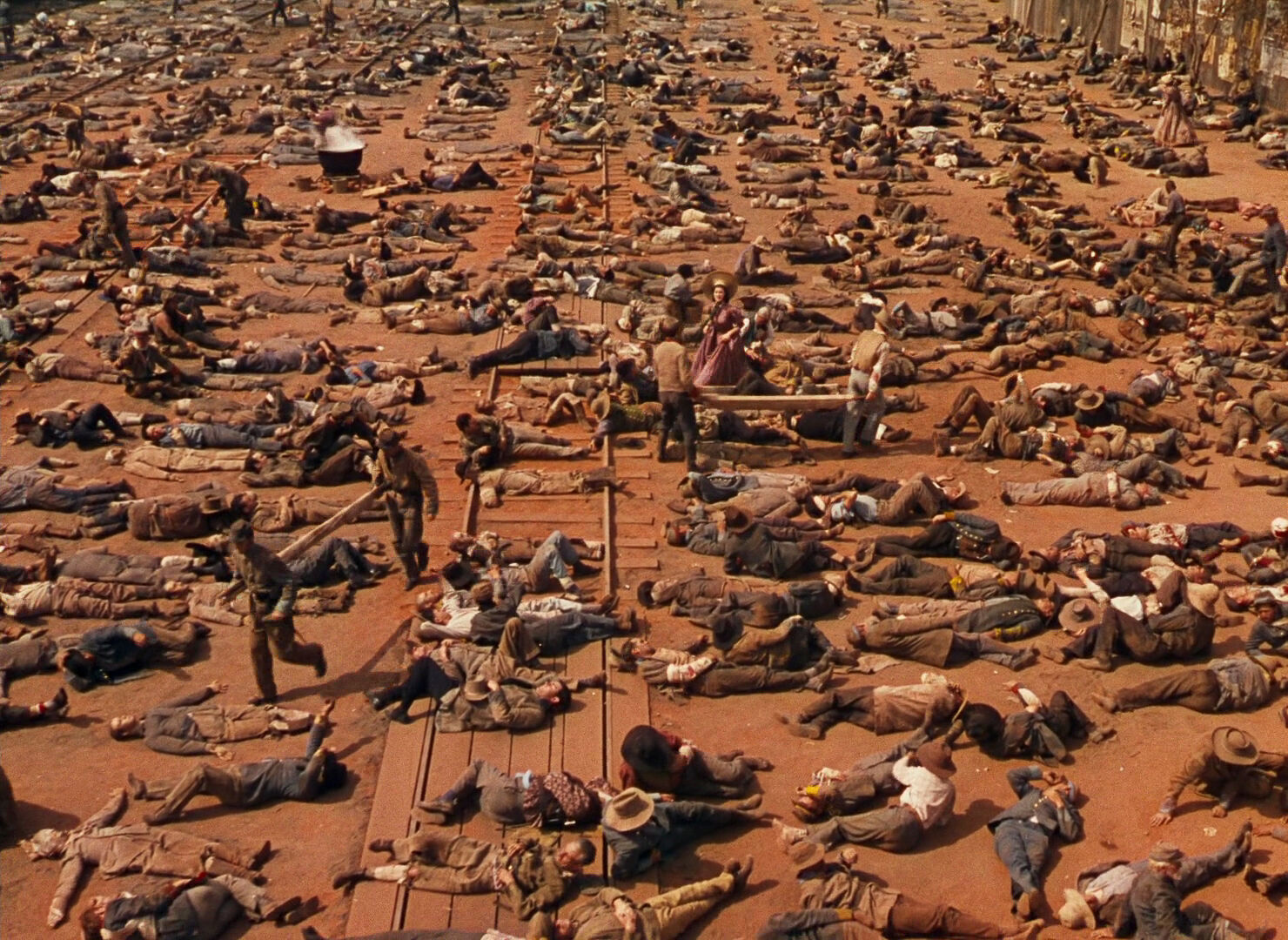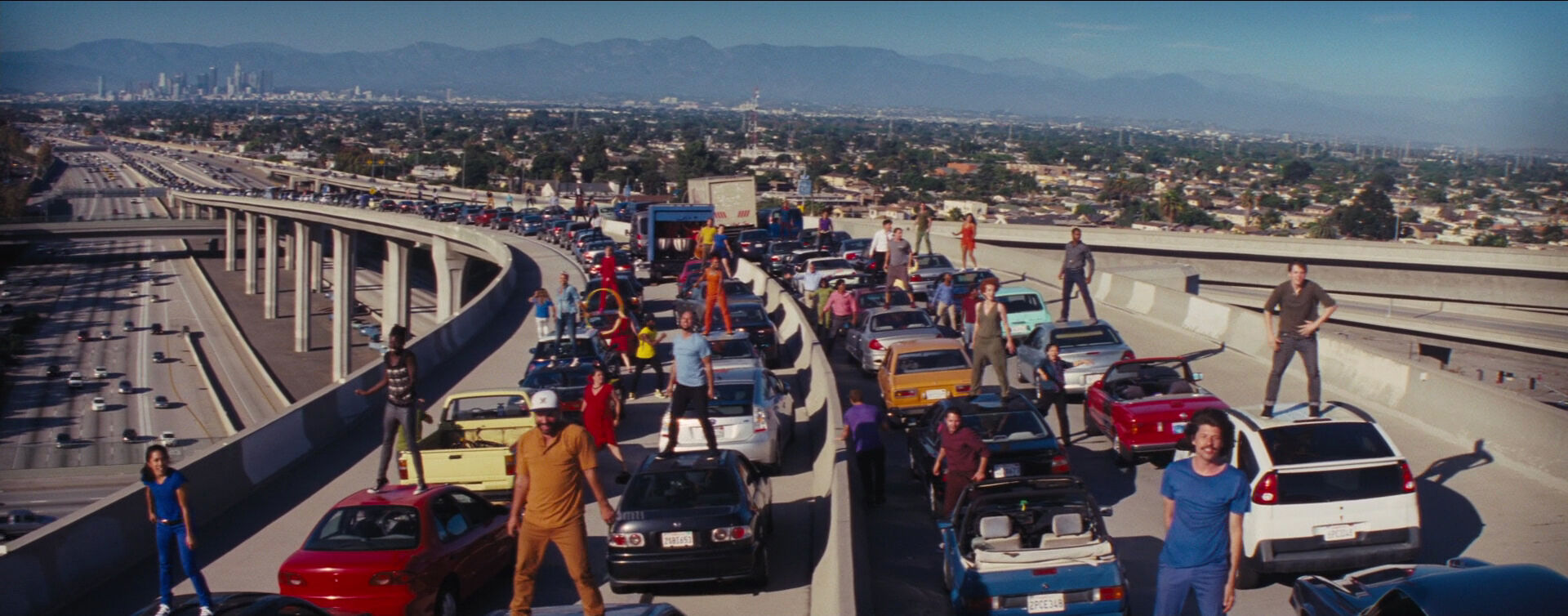home → Camera Movements → Crane Shot
Crane shot definition
What is a Crane Shot?
What is the definition of a crane shot? Crane shots - sometimes called boom crane shots or jib crane shots - are a type of shot in which the camera is mounted on a crane or jib, either to move smoothly up and down, or side to side.
A crane shot in film involves a crane, which is a long arm (or boom) mounted on a base, allowing the camera to be lifted up or down smoothly. Depending on the direction, these shots can also be called crane up shots or crane down shots. The crane allows for shots that glide with the action, capture a scene from high above, or show unique perspectives.
For an in-depth exploration of this technique, check out our full guide to crane shot, complete with examples and breakdowns.
Crane Shots in Movies
Crane Shot examples
It’s helpful to see the Crane Shot in action before exploring how they operate within visual storytelling. Browse this curated selection of Crane Shots examples in film to get a sense of their uses across films.
Reveal information slowly
Follow action
Reveal scale or size
Show character POV
Uses
What does a Crane Shot do?
The crane shot is used for a variety of story purposes, as its smooth movement and ability to reveal scale or height can be very useful to filmmakers.
Following movement
Crane Shots follow action smoothly, without the camera shaking.
Establish scale or size
A crane shot can reveal size, such as floating above a crowd to show how big it is, or panning up to a monster to show its enormity.
Introduce setting
A crane shot is often used in cinematography to rise above a setting - a city, a landscape, a house - to introduce a setting.
Show emotion
A crane shot can rise up as a character feels triumphant, or down if they are feeling vulnerable. The movement of the shot reveals the point-of-view of the subject the camera is following.
Crane Shot
Crane Shot vs Dolly Shot
What is the difference between a crane shot and a dolly shot? While similar, the two camera movements are different in how they move. A crane shot moves the camera up and down using a crane or jib. This creates a sweeping or vertical effect. Meanwhile, a dolly shot moves horizontally, capturing the action by moving right or left along tracks or wheels.
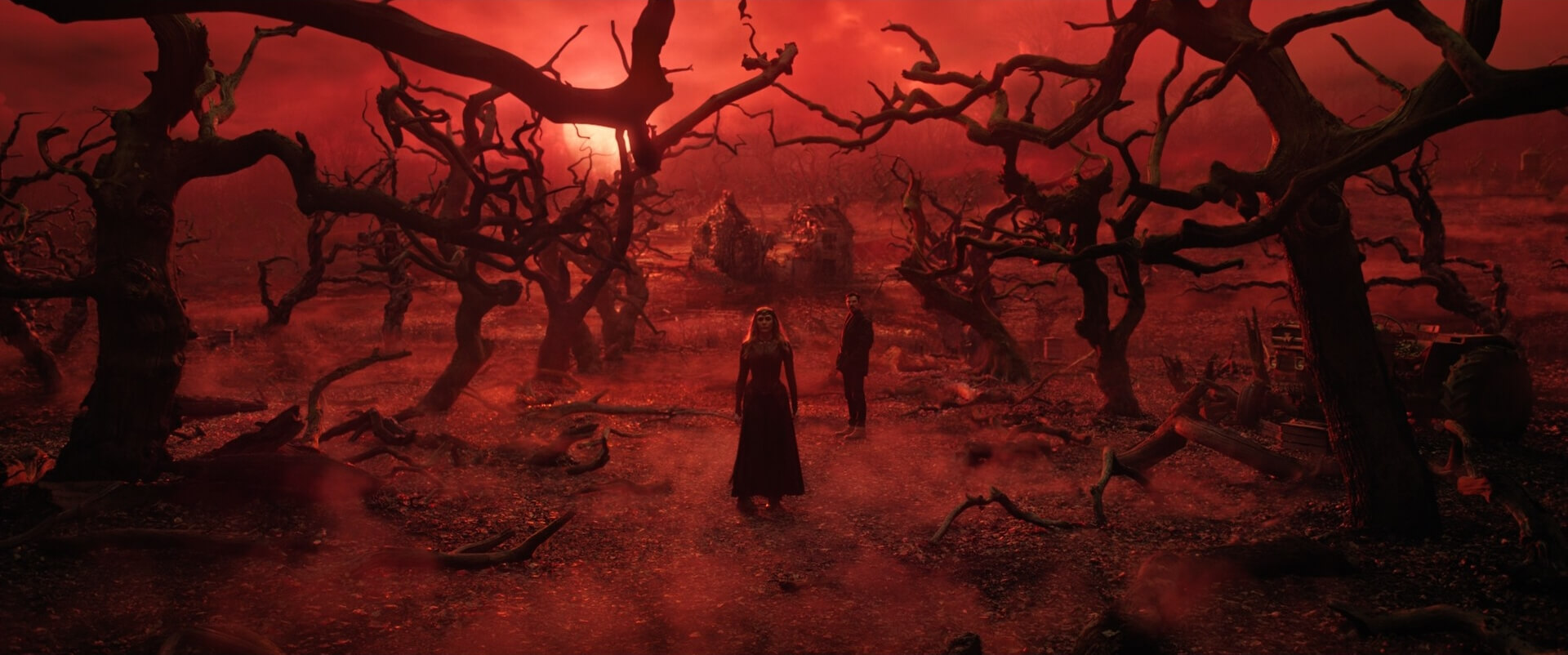
Case Study
Shot listing a Crane Shot
A great example of a crane shot is in Ava DuVernay’s film Selma. In a pivotal scene, Martin Luther King Jr. leads a march from Selma to Montgomery. For these scenes, DuVernay uses sweeping crane shots that rise up to show the vast amount of protesters, capturing the unity and determination of the moment.
Click the shot list below to take a closer look at the entire scene.
Crane Shots are a great way to capture sweeping action or show scale, but they can also be combined with other shots for an even more dynamic outcome.
Unexpected combos
How can you use a Crane Shot with other camera techniques?
How to combine a Crane Shot
Crane Shots are a versatile addition to any filmmaker’s visual language. While impactful on their own, they gain even more power when paired with other techniques. Here are some creative ways the Crane Shot can be combined with different cinematic approaches:
- Tilt Shot: In this shot, as the crane moves up or down, the camera also tilts.
- Dolly Shot: In a dolly crane shot, the camera moves forward or backward on its dolly, while also going up or down on the crane.
- Pan Shot: In this shot, the camera pans horizontally while elevated on the crane. This is usually used for sweeping scenes, such as showing a large crowd. It can also be called an overhead crane shot.
- Tracking Shot: This is when the crane moves alongside a subject, tracking them from the vantage point of the crane.
- Handheld/Steadicam Transfer Shot: Sometimes, a crane shot will end by passing the camera to a handheld or Steadicam operator. An example of this is in “Children of Men,” when the character Theo is attacked while driving through a forest. The scene begins with a crane shot, then transitions to inside the car by handing the camera off to a steadicam or handheld operator.
- Zoom Shot: This shot, often used to convey disorientation, is when the camera zooms in or out while moving on the crane.
Frequently asked questions about the crane shot
A crane shot is when the camera is on a crane, and moves either vertically or in sweeping arcs to capture the movement.
A crane shot is used to show scale, follow action, or show power dynamics or a character’s emotional state.
A crane shot moves the camera vertically, while a dolly shot moves horizontally along a dolly, always staying on the ground.
In a crane shot, the camera glides above, around, or into a scene. The crane shot effect is often a sweeping motion or arc.
A crane shot uses a large rig for wide or high movements, while a jib shot uses an arm, which is much smaller, for similar but tinier movements.



